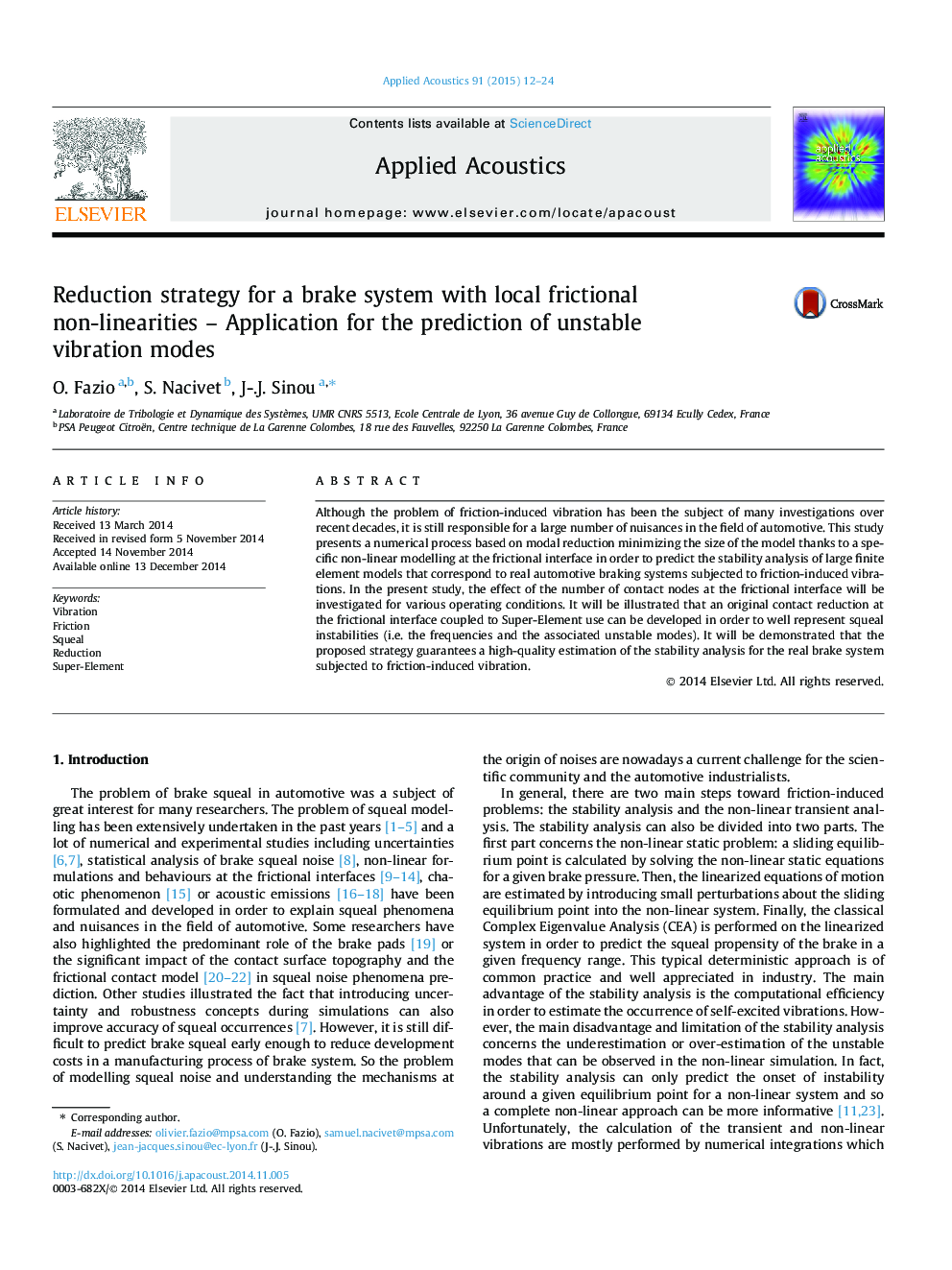| Article ID | Journal | Published Year | Pages | File Type |
|---|---|---|---|---|
| 760889 | Applied Acoustics | 2015 | 13 Pages |
Although the problem of friction-induced vibration has been the subject of many investigations over recent decades, it is still responsible for a large number of nuisances in the field of automotive. This study presents a numerical process based on modal reduction minimizing the size of the model thanks to a specific non-linear modelling at the frictional interface in order to predict the stability analysis of large finite element models that correspond to real automotive braking systems subjected to friction-induced vibrations. In the present study, the effect of the number of contact nodes at the frictional interface will be investigated for various operating conditions. It will be illustrated that an original contact reduction at the frictional interface coupled to Super-Element use can be developed in order to well represent squeal instabilities (i.e. the frequencies and the associated unstable modes). It will be demonstrated that the proposed strategy guarantees a high-quality estimation of the stability analysis for the real brake system subjected to friction-induced vibration.
